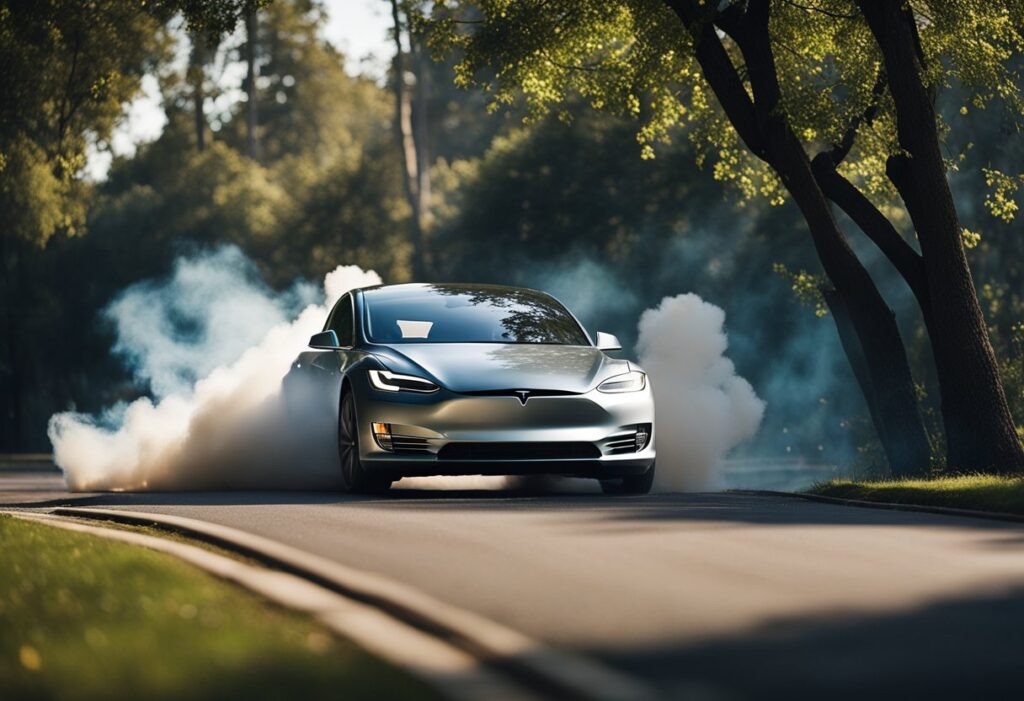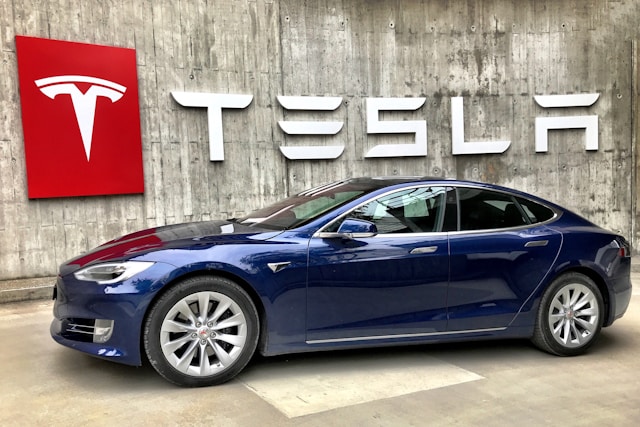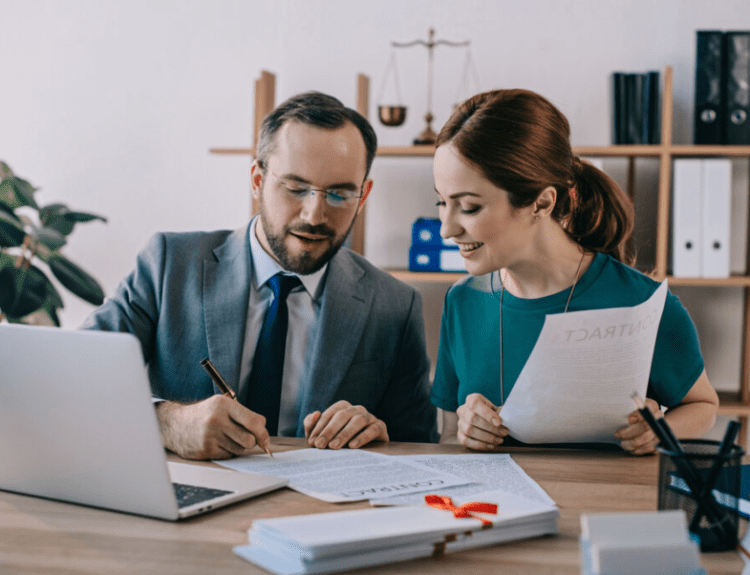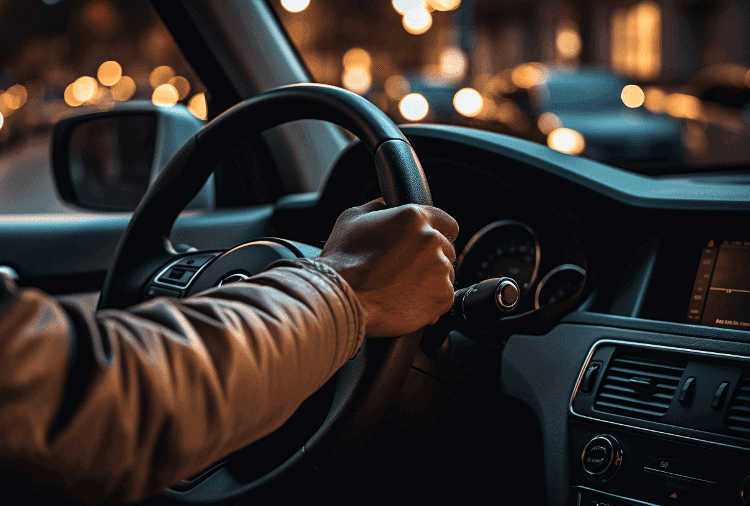When a Tesla is involved in an accident, several factors come into play that can affect the outcome for both the vehicle and its occupants. Tesla vehicles are equipped with advanced safety features and robust structural components designed to protect passengers during collisions. The presence of technology such as automatic emergency braking and collision avoidance systems can significantly mitigate the severity of accidents.
In addition to physical safety measures, Tesla vehicles have access to an innovative post-accident system that communicates with emergency services. This capability not only aids in quicker response times but also provides crucial data to first responders, allowing them to assess the situation more effectively.
Insurance processes for Tesla owners may differ due to the unique technology and repair requirements of these vehicles. Understanding these protocols can be beneficial for Tesla drivers, especially when navigating the aftermath of an accident.
Contents
What to Do Immediately After an Accident
It is crucial to take specific actions right after an accident to ensure safety and proper response. These steps include assessing any injuries and contacting emergency services without delay.
Assessing Safety and Injuries
After an accident, the first priority is personal safety. If it is safe to do so, the driver should check for injuries to themselves and passengers.
Key actions include:
- Stay Calm: Panic can cloud judgment. Take a moment to breathe and assess the situation.
- Move to Safety: If the vehicle is drivable and poses a risk of further accidents, move it to a safe location.
- Check for Injuries: Look for visible injuries or signs of distress in passengers.
- Avoid Moving Injured Persons: If someone is injured, it’s generally better to keep them still and wait for professionals.
These steps can prevent further harm and help responders assess the situation accurately.
Contacting Emergency Services
Contacting emergency services should be done as soon as safety is confirmed. Dialing 911 allows for both police and medical assistance to be dispatched to the scene.
Important details to share include:
- Location: Provide an accurate and clear description of the accident site.
- Nature of Injuries: Briefly describe any visible injuries to yourself or others.
- Vehicle Information: Share specifics about the vehicles involved, including make, model, and any hazards present.
Emergency responders will provide guidance on the next steps. Keeping the phone call clear and concise can expedite help. Responders may also advise on potential dangers at the scene.
Legal Steps Following a Tesla Accident

After a Tesla accident, there are critical legal steps that should be taken to protect rights and facilitate the claims process. Properly managing these steps can impact the outcome of any legal proceedings or insurance claims.
Exchanging Information With Other Drivers
After an accident, drivers must exchange essential information to ensure accountability and support any future claims. This should include:
- Names and contact information: Obtain full names, phone numbers, and email addresses.
- Insurance details: Exchange insurance company names and policy numbers.
- Vehicle information: Record the make, model, and license plate numbers of all vehicles involved.
It is advisable to remain calm and courteous during this exchange to avoid escalating tensions. Each party should take notes on the discussion as well, as this may aid in any legal claims later.
Documenting the Scene and Collecting Evidence
Documenting the accident scene is vital for establishing facts later on. Key actions include:
- Taking photographs: Capture images of vehicle damage, road conditions, and any relevant traffic signs or signals.
- Recording witness information: Note down names and contact details of witnesses, as they can be crucial for corroborating accounts of the event.
- Writing down notes: Jot down thoughts about how the accident occurred, which can serve as a helpful reference.
Collecting this evidence helps build a comprehensive case if disputes arise regarding liability or injuries sustained. A Phoenix car accident lawyer may find this documentation useful when presenting a case.
Reporting the Accident to Authorities
It is crucial to report the accident to law enforcement, especially if there are injuries or significant property damage. Here are the steps involved in this process:
- Call 911: Immediately inform law enforcement about the situation. They will document the accident in an official report.
- Provide necessary information: Communicate clearly about the accident while avoiding admission of fault.
- Obtain a police report: After the authorities investigate, request a copy of the report for insurance claims.
This report provides an official account that may prove essential for legal proceedings. Consulting with a Phoenix car accident lawyer can help interpret the report’s implications for any claims or disputes that follow.
Tesla’s Post-Accident Safety Features
Tesla vehicles are designed with distinct safety features that activate after an accident. These features aim to protect occupants, mitigate damage, and ensure rapid emergency response.
Automatic Emergency Response
Tesla’s automatic emergency response system enhances safety following an accident. After a collision, the vehicle can automatically contact emergency services using built-in cellular technology. This feature provides precise location data to first responders, ensuring a swift response.
In addition, Tesla vehicles can send diagnostic information to the emergency services, detailing the extent of potential injuries or vehicle damage. This capability helps responders prepare for any specific challenges when arriving at the scene. Additionally, Tesla’s app allows owners to receive updates about their vehicle’s status and location after an accident.
Battery Safety Measures
Tesla employs robust battery safety measures that activate in the event of an accident. The vehicle’s battery management system is designed to minimize risks such as fire or chemical leakage. In the instance of a crash, the battery disconnects automatically to reduce the risk of electrical fires.
Furthermore, the battery casing is engineered to protect against damage from structural impacts. Tesla’s thermal management system also helps regulate battery temperature post-accident, lowering the possibility of thermal runaway. These features provide significant peace of mind when considering safety after a collision.
Insurance Claims Process
Navigating the insurance claims process after a Tesla accident requires attention to detail. Individuals must understand how to file a claim and the specifics of Tesla’s insurance policies.
Filing a Claim With Your Insurer
To initiate a claim, the individual should contact their insurance provider promptly. The insurance company typically requires details such as the date, time, and location of the accident, as well as contact information for all parties involved.
A detailed accident report, photographs, and any witness statements can facilitate the process. Most insurers have digital claims submission options, allowing users to upload necessary documentation directly through their app or website.
It is essential to keep records of all communications with the insurer for follow-up. Claims may also involve assessments from insurance adjusters. Ensuring these steps are meticulously followed helps streamline the claims process.
Understanding Tesla’s Insurance Policies
Tesla offers its own insurance product in select markets, designed specifically for Tesla vehicles. These policies often include unique features such as the TrueCar replacement cost and the option to add coverage for vehicle upgrades.
Tesla’s insurance aims to provide competitive pricing based on driving behavior, which is tracked through the vehicle’s telemetry. Such data can help lower costs for safe drivers.
Individuals should carefully review the coverage limits, deductibles, and requirements for claims under Tesla’s insurance. Regularly updating personal information and vehicle modifications with the insurer is crucial to maintain accurate coverage. Understanding these aspects ensures individuals are adequately protected.
Vehicle Damage Assessment
Assessing damage after an accident is crucial for determining the vehicle’s repair needs and ensuring safety. Tesla has established specific protocols and works with certified centers to address repairs effectively.
Tesla’s Repair Protocol
Tesla’s vehicles are equipped with advanced technology that requires precise evaluation after an accident. The company recommends an inspection that looks for damage to structural components, mechanics, and the battery system.
A trained technician will utilize specialized tools and diagnostic equipment to assess the vehicle. This evaluation typically involves:
- Checking alignment and suspension systems
- Examining body panels for structural integrity
- Testing electrical systems, including the battery and safety features
Following the assessment, technicians will provide a detailed report outlining necessary repairs and estimated costs. Adhering to these protocols ensures repairs are completed to Tesla’s high standards.
Working With Certified Tesla Repair Centers
It is essential for owners to utilize certified Tesla repair centers for accident repairs. These certified centers are trained to handle the unique requirements of Tesla vehicles.
Before choosing a repair facility, customers should confirm it is officially recognized by Tesla. Certified centers have access to:
- Manufacturer-specific parts
- Technical updates
- Training on proper repair techniques
Using these centers often leads to faster repair times and maintains vehicle safety and performance. Additionally, repairs conducted at certified centers can help preserve the vehicle’s warranty.

Impact on Tesla Autopilot and Safety Features
The impact of an accident on Tesla’s Autopilot and safety features can be significant. Understanding how these systems respond post-collision is crucial for drivers and potential buyers.
Autopilot System Integrity after an Accident
Following an accident, the integrity of Tesla’s Autopilot system may be affected based on the nature and severity of the incident. In cases where the vehicle is rear-ended, the sensors and cameras used for Autopilot may require recalibration or inspection.
Tesla vehicles are designed to run diagnostics after a collision. The vehicle’s onboard computer can identify any irregularities in sensor function. If the Autopilot system detects any issues, it will automatically disable itself until necessary repairs are made. This safety protocol ensures that drivers are not relying on compromised systems.
Restoring Active Safety Features
After an accident, restoring active safety features is an important process. Following an incident, drivers typically receive a notification regarding the status of safety systems. These systems can include features like automatic emergency braking and lane-keeping assist.
To restore these functionalities, a thorough examination by a Tesla service center is often required. Technicians will inspect the vehicle for damage that could impact system performance. After repairs and recalibration, the safety features can be activated again. It is crucial for drivers to have these systems functioning optimally for continued safe operation of the vehicle.
Liability and Legal Considerations
Understanding liability in Tesla accidents involves aspects such as fault determination and the role of data logs. These elements can significantly impact the outcomes of legal proceedings.
Determining Fault in Tesla Accidents
Fault in a Tesla accident is established through various factors, including traffic laws and driver actions. Investigators assess evidence such as witness statements, vehicle damage, and traffic camera footage.
In multi-vehicle crashes, determining liability can be complex. Each party’s actions are analyzed to understand how they contributed to the incident.
In some cases, Tesla drivers may invoke the vehicle’s advanced safety features as a defense. However, the effectiveness of this argument depends on the specific circumstances of the accident.
Role of Tesla’s Data Logs in Litigation
Tesla vehicles are equipped with sophisticated data logging systems. These logs capture critical information, including speed, braking, and any engaged Autopilot features just before an accident.
Such data can be crucial during legal disputes, providing objective evidence of vehicle performance. Lawyers, such as those at Wyatt Injury Law, rely on this data for accident reconstructions and liability analysis.
The data logs can help clarify whether driver error or vehicle malfunction played a role in the accident. In litigation, obtaining this information may require legal requests or cooperation from Tesla.
Safety and Recall Information
Tesla vehicles include various safety features and have undergone recalls for specific safety concerns. It is essential for owners to be aware of recall information and address any necessary actions following an accident.
Understanding Recalls Related to Safety Concerns
Tesla issues recalls when safety defects are identified. These recalls are generally communicated through official letters to owners and can also be found on the National Highway Traffic Safety Administration (NHTSA) website.
Owners can check their vehicle identification number (VIN) to determine if their Tesla is subject to any recalls. Recalls may involve software updates or mechanical repairs designed to resolve safety issues.
In some cases, recalls address problems that could lead to fires, crashes, or injuries. Owners should act promptly to ensure the safety of their vehicle.
Addressing Post-Accident Recalls
Following an accident, the Tesla’s condition should be evaluated by a certified technician. It is crucial to confirm that no new safety concerns arise from impact damage.
If the vehicle is affected by an open recall, it should be addressed immediately. Repairing any recall-related issues can further safeguard the occupants and others on the road.
Owners can utilize the Tesla app or website to schedule appointments for repairs. Keeping up with recalls and maintenance is essential for optimal safety performance.
Impact on Insurance Premiums
When a Tesla is involved in an accident, insurance premiums may be affected due to varying factors related to the vehicle’s repair costs and the nature of the incident. Insurers often reassess risk after claims, which can lead to changes in rates.
Insurance Rate Changes After an Accident
Insurance rates may increase following an accident involving a Tesla. This change depends on several factors, including the severity of the accident and the number of claims filed by the driver.
Typically, the insurance company will evaluate the circumstances and costs associated with repairs. For Tesla vehicles, repair costs can be higher due to specialized parts and technology. This can lead to a more significant increase in premiums compared to conventional vehicles.
For example, if a Tesla owner has a history of claims, insurers may categorize them as a higher risk. Consequently, their premiums could rise substantially. If the accident is minor and the driver maintains a clean record, the increase may be less severe.
Negotiating with Insurance After an Incident
Negotiating with the insurance company post-accident is crucial for Tesla owners. Effective negotiation can potentially reduce premium increases or assist with claims processing.
To begin, Tesla owners should gather all relevant information about the accident. This includes police reports, witness statements, and photos of the incident. Presenting this documentation can strengthen their case.
They should also review their policy to understand coverage limits. If the repairs are covered under warranty or endorsement, this may influence negotiations. Maintaining clear and concise communication with the insurance adjuster is vital.
Being polite yet assertive can lead to better outcomes. It is important for the owner to clearly outline their concerns and expectations during discussions.
Physical and Emotional Recovery
Recovery after a Tesla accident involves addressing both physical injuries and the emotional impact of the event. Each aspect requires careful attention to ensure individuals regain their quality of life.
Injury Treatment Post-Accident
Following a Tesla accident, prompt medical attention is critical. Common injuries can include whiplash, fractures, and contusions. Patients should undergo a thorough medical evaluation, often involving imaging tests like X-rays or MRIs.
Follow-up care may involve physical therapy to rebuild strength and mobility. Patients should stay vigilant for any persistent symptoms that require further medical evaluation.
If you were not at fault, contacting a Phoenix car accident lawyer can help navigate potential claims for medical expenses. Understanding legal rights can alleviate some stress and provide financial support during recovery.
Dealing with Post-Traumatic Stress
Emotional recovery is as vital as physical healing. Accidents can lead to post-traumatic stress disorder (PTSD), characterized by flashbacks, anxiety, and sleep disturbances.
Seeking therapy with a mental health professional is often beneficial. Therapists may use cognitive-behavioral techniques to help manage symptoms.
Support from friends and family is essential in this process. Joining support groups with others who have faced similar experiences can foster a sense of community.
Acknowledging both physical and emotional challenges is important when dealing with the aftermath of an accident.
Tesla’s Commitment to Safety
Tesla prioritizes safety in its vehicle design and engineering. The company has made significant investments in innovative safety technologies aimed at minimizing risk and enhancing occupant protection.
Advancements in Vehicle Safety
Tesla vehicles feature advanced safety systems that help prevent accidents. One key technology is the Autopilot, which utilizes cameras, sensors, and radar to assist drivers. This system continuously monitors the vehicle’s environment, detecting potential hazards.
Crash safety is another focus for Tesla. The vehicles undergo rigorous testing, achieving high ratings in crashworthiness. The low center of gravity due to battery placement reduces rollover risk.
Additionally, Tesla employs innovative materials like high-strength steel and aluminum. These materials enhance structural integrity and absorb impact energy effectively, providing better protection for occupants in the event of a collision.




